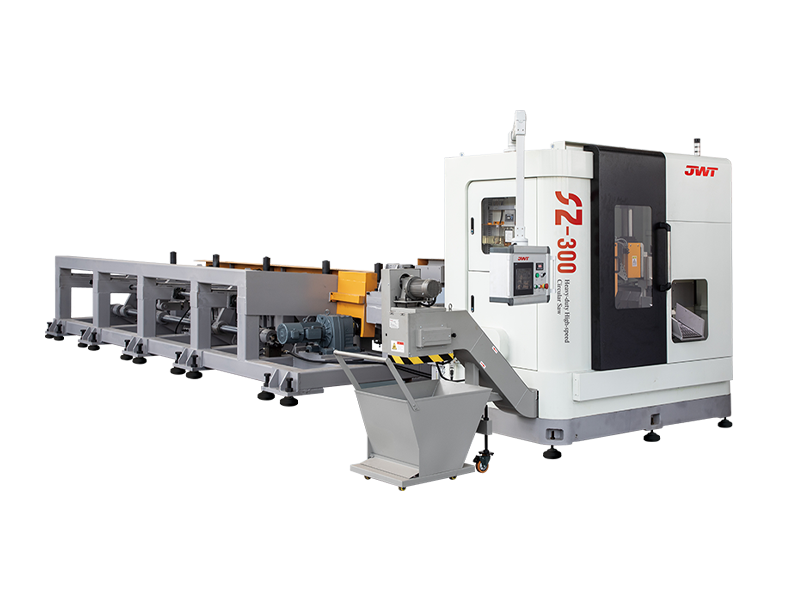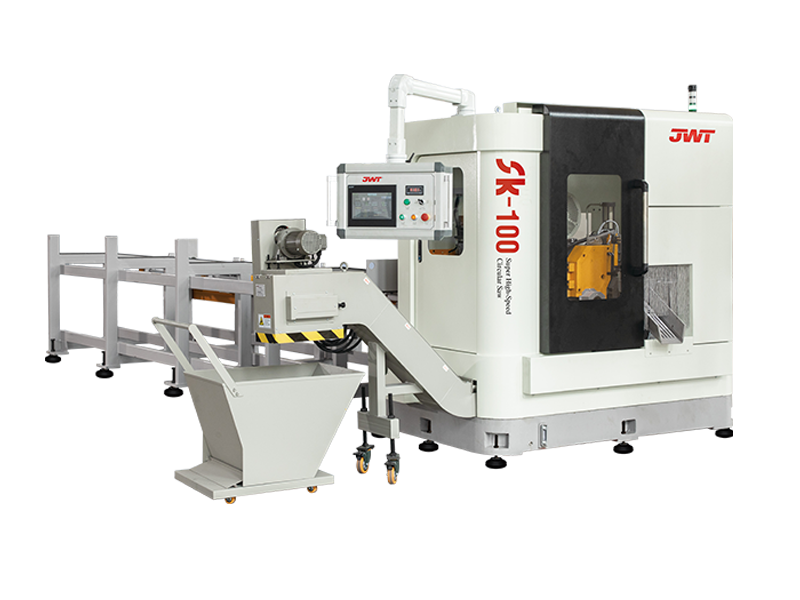The Power and Precision of the Super High-Speed Circular Saw
The Super High-Speed Circular Saw (often referred to as an industrial High-Speed Circular Saw or HCS) represents a significant leap in metal cutting technology, moving far beyond the capabilities of traditional sawing methods. These industrial machines are engineered for demanding, high-volume production environments, offering unparalleled efficiency, precision, and a drastically reduced cost per cut. They are essential equipment in industries ranging from steel trade and automotive manufacturing to forging and aerospace.
Key Technological Advancements
What sets a Super High-Speed Circular Saw apart is the combination of a robust machine design and advanced blade technology, allowing for high spindle speeds and rapid material removal while maintaining stringent quality control.
-
High Power and Rigidity: These saws are built with powerful drive motors (sometimes exceeding 20 horsepower) and extremely rigid components. This stability is critical to manage the forces generated at high cutting speeds, preventing vibration and ensuring the blade tracks accurately for a clean, straight cut.
-
CNC Automation: Modern HCS systems are typically fully automated and numerically controlled (CNC). This automation manages the entire cutting cycle—including material clamping, sawing, and workpiece feeding—which significantly reduces non-productive time and ensures high repeatability and accuracy, crucial for large-scale production.
-
Advanced Cooling Systems: High-speed metal cutting generates substantial heat. Sophisticated cooling systems, like "Multi-Fluid" concepts, deliver pinpoint cooling and lubrication directly to the cutting zone. This cooling minimizes thermal distortion, extends blade life, and is particularly vital when processing high-alloy materials like stainless steels, tool steels, and nickel-based alloys (e.g., Inconel and Hastelloy).
Blade Engineering: The Core of High-Speed Performance
The saw blade is the technological heart of the system. Its performance is dependent on its material, coating, and geometry, which are all optimized for the extreme conditions of high-speed cutting.
-
Blade Materials:
-
Tungsten Carbide Tipped (TCT): These blades feature tungsten carbide tips brazed to a steel body. Carbide is significantly harder than steel, offering excellent wear resistance and thermal stability, making it the primary choice for cutting hard metals, steel tubes, and high-tensile materials at elevated speeds.
-
Super High-Speed Steel (HSS-DMo5/HSS-Co5): HSS blades are popular for their balance of strength and affordability, and specific alloys like HSS-Co5 (with 5% Cobalt) are designed to retain hardness and edge-holding capability at the high temperatures encountered in metalworking.
-
-
Specialized Coatings: Blades are often treated with specialized Physical Vapor Deposition (PVD) coatings to enhance performance. Coatings like TiN (Titanium Nitride) and TiAlN (Titanium Aluminum Nitride) increase surface hardness (up to 3400 Vickers for TiAlN), reduce the coefficient of friction, and provide high thermal resistance, allowing for faster cutting speeds and extended tool life, sometimes with minimal lubrication.
-
Tooth Geometry: The design of the teeth, including the rake angle, tooth pitch, and gullet shape, is meticulously calculated based on the material being cut to optimize chip formation and removal, ensuring a smooth, burr-free finish.

Impact and Applications
The adoption of the Super High-Speed Circular Saw has revolutionized metal fabrication and processing by offering several distinct advantages:
-
Increased Productivity: The rapid cutting speeds and automation capabilities drastically reduce cycle times, leading to a much higher output compared to traditional band saws or reciprocating saws.
-
Superior Cut Quality: The machine's rigidity and the precision of the blades result in cuts with a clean, burr-free surface finish, often eliminating the need for secondary finishing processes.
-
Versatility: With the right blade and operational settings, these saws can precisely cut a wide array of materials and profiles, including solid bar stock, tubes, and complex structural shapes.
The Super High-Speed Circular Saw is more than just a cutting tool; it is an integrated, high-precision machining system that drives efficiency and quality in modern industrial production.



 中文简体
中文简体 русский
русский







